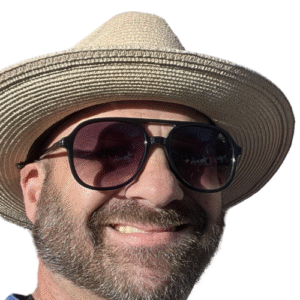By Mike Vatter
The world may see a successful executive in his forties. They see the perfect reports, the confident presentations, the meticulously organized desk. What they don’t see is the constant, low-humming anxiety that underpins every single decision, every single action. They don’t see the elaborate mental rituals I perform every morning and every night, or the mental gymnastics I engage in to silence the intrusive thoughts that claw at my peace. I am a Gay man, and I also live with Obsessive Compulsive Disorder (OCD).
For years, I kept it hidden. The shame was a heavy cloak, woven with societal expectations of masculinity and the added layer of navigating a world not always designed for someone like me. Coming out as Gay in my late teens felt like scaling Mount Everest. Revealing the tangled mess of my mind felt like staring into an abyss.
My OCD has manifested in a few key areas over the years, the most prominent being harm fears and a relentless need for symmetry and order. It started subtly in early childhood. A slight unease about public restrooms, a preference for things to be neatly aligned on my shelves. Over time, the whispers grew louder, the demands more insistent.
Soon, leaving my house would involve a carefully choreographed sequence. Check the faucets – not once, not twice, but at least three times, each one jiggled with a specific pressure. Check the door lock – a similar ritual, the deadbolt engaged and disengaged, then engaged again, the click a temporary reprieve. This can take upwards of twenty minutes, and the entire time, a nagging voice whispers doubts: Did you really check? What if you didn’t do it right?
My professional life, ironically, both fuels and suffers from my OCD. Being an executive in my company requires precision and detail, aspects where my need for order can be an asset. I thrive on creating clean lines and balanced reports. However, the pressure to be perfect, amplified by my internal critic, can be paralyzing. A misplaced decimal point send me spiraling into hours of rechecking, fueled by the catastrophic “what ifs” that plague my mind.
Socializing has been… complicated. The spontaneity that often comes with friendship is a foreign concept to me. Inviting someone into my meticulously controlled space feels like an act of immense vulnerability. Explaining why I need to do things a certain way, or why the placement of their shoes by the door sends a jolt of anxiety through me, feels impossible. I’ve had friends who were understanding, and others who were simply bewildered, sometimes even judgmental. The fear of being “too much” often leads to me holding back, creating a barrier that hinders intimacy.
The intersection of my sexual orientation and my OCD adds another layer of complexity. Societal stereotypes can be insidious. The image of the fit, effortlessly stylish Gay man clashes sharply with the reality of my internal battles. There’s a pressure to be “on,” to exude confidence and charm. Admitting to the anxieties that consume me feels like admitting a weakness, a deviation from that often-idealized image.
Therapy has been a lifeline. Cognitive Behavioral Therapy (CBT) and Exposure and Response Prevention (ERP) have slowly, painstakingly, helped me to challenge my intrusive thoughts and resist the urge to engage in compulsions. It’s not a cure, but it’s given me tools to manage the relentless demands of my mind. There are still days when the rituals feel overwhelming, when the anxiety is a suffocating blanket. But there are now several days when I can leave the house after only one lock check, when I can tolerate a slightly askew picture frame without feeling the urge to fix it immediately. These small victories feel monumental.
The post The Unseen Chaotic Choreography appeared first on International OCD Foundation.

